Hitting back against heatwaves
In this week's news show: Chris provides an update on the polio situation in London, and we hear what we can learn from hotter climes about dealing with the scorching weather. Plus, the robotic ant teaching other insects a lesson, tracking migrating moths, and getting to the bottom of earth's oxygen supply...
In this episode
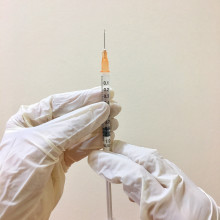
00:45 - More polio vaccine virus found in sewers
More polio vaccine virus found in sewers
Chris Smith, Naked Scientists
Across London, over a million children aged 1 to 9 will be offered a poliovirus vaccine in the coming months. This has been announced following the detection over a number of months now of poliovirus in sewage samples collected from a number of London boroughs. It indicates spread of the virus in the community, which in turn points to insufficient levels of immunity in the population. Chris Smith told James Tytko about the ongoing situation...
Chris - Going back over the last few months, the sampling - which is done routinely on sewage in London and also carried out in Glasgow - has picked up traces of the genetic material from polio virus, but not what we call the wild type virus - it's actually vaccine. We've got three different types of poliovirus that we have vaccines against, and they're weakened forms of the virus. They've been grown in a dish and because a dish doesn't have an immune system, if you do this for long enough, eventually you get a virus that forgets how to outwit your immune system and it weakens. So it can show you what polio virus looks like, but it can't make you ill and that's why it's used as a vaccine. But it's not used here anymore. We stopped using live vaccines in this country about 20 years ago. The reason for this is that there is a low risk when you use those live vaccines, that as well as rendering people immune, you are putting back into the environment live poliovirus that can mutate and change and become virulent again; it could cause polio in the future. So we don't use them, but some countries still do specifically those countries where they're still circulating polio. Only a handful of those, thank goodness, nowadays. So what this tells us is that somebody has been to one of those particular risk areas and they've received the polio vaccine, or they have come into contact with it in the environment, they've brought it to the UK, and it's now settled into a community where there's insufficient levels of immunity to polio with the consequence that it is spreading in the community. And what has now spooked public health officials in London is that not only have they detected this, but they've gone on to continue to detect it until most recently in July, and they've also detected now some signs that the virus is changing genetically in a way that would revert it back to a virulent form of polio that could cause paralysis, which used to be a scourge causing thousands of cases of paralysis in younger people about 50 years ago.
James - That's worrying to hear because as far as I knew the UK had eliminated polio. How worried are you? What's the risk of this posing a big threat to public health?
Chris - Well, there are a number of things to be worried about. One of them is the broader picture, which is that if this is circulating and it's circulating in a population that ostensibly have all been vaccinated because we vaccinate our children in this country with a killed form of polio vaccine from the age of when they're born - two, three, and four months you get your first doses of polio vaccine - then a reminder for your immune system at the age of three. And then another reminder, a booster, at 14. This should endow people with comprehensive lifelong immunity against polio. The fact that it is circulating in the community shows that there is inadequate protection from people who probably haven't been adequately vaccinated. So there's probably poor vaccine uptake. And that is born out by the fact that when surveys are done in some of the London boroughs where this is being detected, only 61% of children have been vaccinated. To get the magic herd immunity that we need to stop the virus circulating like this, you need 95% uptake of the vaccine. We're well short of that. So there's a public health situation in terms of vaccination, which means we're also vulnerable probably to other diseases as well if there's lower uptake with other sorts of vaccines. There's also the fact that we have now got the circulation in our community of a form of polio which is live and it could revert into a fully virulent polio capable of triggering cases of paralysis. And that has happened. And in New York, they have detected a young man with actually the same type of polio as we've got here in recent weeks, who has developed some polio symptoms. So the risk is very real.
James - So the next steps, presumably we need to get vaccines in arms. How will that help put a cap on the situation?
Chris - What they are announcing in London in the last day is that a million children up to the age of nine from the age of one will be offered a polio booster. Now it doesn't matter if anyone has already had all of the polio vaccines they should have done, this will merely boost the immunity they've got. But what it will hopefully do is endow those people who have fallen short of adequate protection or have had no protection yet with (a) protection from severe disease. Because if you have all of your polio shots, you have a 99-100% chance that you won't become severely unwell if you do encounter polio. But what it will also do is it will stop the chain of transmission. So we will hopefully reign in this onward transmission we're seeing with the virus in the community, and that will reduce the risk of further incurrences into other populations and possibly this reversion to type where the polio becomes more like it's wild type cousin capable of causing paralysis again.
James - Let's hope we can keep it under control. Chris. Thank you very much.
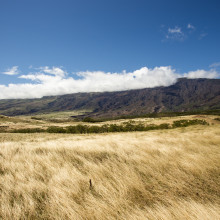
06:11 - How the UK can adapt to future heatwaves
How the UK can adapt to future heatwaves
Shaun Fitzgerald, Cambridge University
Many countries are in the grip of severe heatwaves and droughts. In the UK, July was the driest since 1935. Climate projections predict that these events will become much more frequent in future. At the same time, our infrastructure remains woefully underprepared to deal with more summers with prolonged heat and a lack of rain. Shaun Fitzgerald is from the Centre for Climate Repair at Cambridge University where they consider scenarios like these and told James Tytko about the current drought...
Shaun - Well, the first thing is that it is not good news clearly, but the second thing is sadly, this is not a surprise. We have been projecting this for actually really quite some time that we will be seeing an increased frequency of severe weather events and an increased severity of those severe weather events. It's been a case of not if, but when, and how frequent are we going to see these. It's becoming very much more real because it's on our doorstep and we have this unfortunate tendency that if it's not on our doorstep and it's not very pleasant, we seem to ignore it. But I'm afraid we can't do that anymore and we've got to deal with this, but we've got to deal with this by learning from others who have had to deal with conditions like this. We seem to be living in a more Mediterranean type climate over the summer, but conversely, come the winter, we may well also be looking at severe weather events; increased water, actually flooding and things like this. We're going to see more volatile weather than we have had to enjoy for the last many decades.
James - You mentioned they're potentially learning from other countries, neighbours, maybe who are used to these sort of climates on a more regular basis. How can we safeguard ourselves in the short term? What can we learn from our neighbours?
Shaun - The most important thing is to think about who are the people that are going to be most affected and they're the more vulnerable people in society. So the elderly, those with medical conditions, are going to be the ones that we really need to think about. And the kinds of things that we need to do are looking at the living styles and the housing styles that have been adopted in many different climates than the UK. So if we go further south towards a Mediterranean, for example, many of the houses will have shutters. They're not there by accident there for a very good reason, in that during the day in the summer, the ventilation and the strategy for managing your interior environment is to close the shutters, probably close the windows as well if it's really hot outside, because the previous night you've ventilated the building very, very well - you've kept the shutters open, you've kept the windows open. Furthermore, the kind of buildings that have been constructed are likely to have been more thermally massive. So they've got thicker walls, they're made out of stone and things like that. Those buildings have got a capacity to precool those buildings at night so that during the following roasting hot summer day, you are bathed in a cool environment and you're radiating heat at 37 degrees celsius, if you are reasonably well, and those stone walls or the thermally massive walls are much colder, maybe they're at 15 to 20 degree centigrade, you are effectively radiating heat to those successfully and deriving a pleasure of the fact that they're absorbing that radiation and you will therefore have not only a cooler air temperature, but a cooler perceived temperature as a result of that radiative effect.
James - You've described there some actions we can take on an individual household level and then there's others, which will require some big infrastructure changes. Are you confident that the authorities of the powers that be are taking this issue seriously enough?
Shaun - I'm not unfortunately. And it's because of the pace of change that we are now seeing in terms of the climate and we are questioning really how quickly can policies change, and I think we need to be moving much more quickly. So for example, with the shortage of water at the moment, should we all have water butts to go and actually store rain when it does come so we can then at least provide water for vegetables and things like this. If you're growing those in your garden. We've got to do more things like this, we've got to do more things on the planning and it's so often that we don't have these things just installed as standard; I think it's very rare that you see this as part of a new build development.
James - And just quickly Sean, have you got any more suggestions along the same lines that people listening right can do to help reduce their water usage, for example?
Shaun - Well, the first thing is to just be more aware of how much water you are using. When you turn the washing machine on, has it got a full load or a half load? Let's wait and do the full load. Secondly, when you're doing the washing up, instead of just being tempted to tip the, the dirty dish water down the sink, let's go and find another use for it, take it outside. I know it's a hassle, but actually if that's the water that gets put onto pot plants - and it's pot plants in particular that don't do very well in these sorts of conditions because pots just don't retain their water very well - you can actually safeguard your geraniums or whatever it is you've got planted and actually enjoy the fact that you are able to cope with some of this warm weather.
James - Shaun Fitzgerald, thanks very much for coming in.
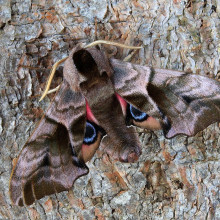
12:13 - Tracking moth migration from the skies
Tracking moth migration from the skies
Myles Menz, James Cook University, formerly of Max Planck Institute of Animal Behaviour
Many insects migrate, sometimes over long distances of hundreds or even thousands of kilometres, yet with extraordinary accuracy. It puts our ability to get from A to B to shame. But when it comes to how they actually go about this, and what techniques they use to find their way, we have very little idea. So, armed with an aeroplane, some stick-on radio tags and a handful of migratory hawkmoths destined for the Alps in Germany, Myles Menz has been trying to discover how something the size of your thumb can achieve amazing feats of navigation…
Myles - And so the idea was to fit these really tiny radio transmitters onto these moths. And then we would release them at night, around autumn, when they were supposedly ready to migrate. And then we waited and hoped that we would actually catch them while they were migrating. And we did.
Chris - I'm intrigued by the idea of putting a radio transmitter on an insect. I mean, how big are these devices and how big are the moths that you're studying?
Myles - So these devices are really quite small. This is more traditional radio tracking technology that's been used for many decades often for tracking birds. It's got to a stage now where the tags are small enough that we can fit them onto some large insects. And so some of the smallest tags that we were using are around 0.2 of a gram. So 200 milligrams. And in this case, the moths were really quite large. So one of the large females can weigh up to about three and a half grams. So actually the radio transmitter is really quite a small proportion of this animal's body weight.
Chris - And how do you track the radio signals?
Myles - We follow the signal by using an antenna and we basically hone in on the signal strength. In this case, the moths were flying at night and probably travelling quite some distance. So we used an aircraft, and the aircraft was fitted with receiver antennas under the wings which allowed us to effectively triangulate the position of the insect from the aeroplane.
Chris - I'm smiling to myself. The idea of you flying along after a bunch of moths in a light aircraft. How far were they going then? And from where to where?
Myles - So in this case, our tracking was undertaken in Southern Germany and we were able to follow the moths as they moved South or Southwest towards the Alps. And so this was over a distance of a little bit over 80 kilometres at any one time. This is one of the longest direct tracks that we have of being able to continuously follow a migrating insect. What we found most surprisingly was that these animals are able to fly in really very straight lines. Effectively, they had a heading that they would select or that they would fly on and they were able to make a beeline for that. They were able to do this in a series of different wind conditions. For example, if they had some nice, favourable tailwinds that might be blowing them in a southwesterly direction towards where they would want to migrate towards, they would fly a bit higher above the ground. So probably around 300 metres. However, if there were winds that were blowing directly towards them, so headwinds or even crosswinds, they would actually adjust their headings to compensate for wind drift, which we found was really quite fascinating. And they do this also quite a bit lower to the ground. So probably within that first 50 metres where they were somewhat buffered from the wind, but able to control their headings better.
Chris - That's an extraordinarily effective mastery of flight for such a simple creature.
Myles - Yeah, absolutely. We've known quite a bit about how insects might respond to winds. And so there's been work showing that, for example, butterflies during the day might fly a bit lower towards the ground. And we certainly see that some insects might just fly down wind, but certainly in this case, what it's really revealed and something that we've been thinking about for quite a long time is that many insects aren't really passive migrants and they're very active migrants. And so they're not just getting blown about by the wind, they're really selecting directions where they want to go and really adjusting their course and adjusting their flight path to actually achieve that.
Chris - When the research was published on the monarch butterfly, which makes stupendously long migrations in the Americas, they also do interesting things where they set their body clock to where the sun is. So they know what time of day it is, and they align that with the magnetic field so that they're always on course using the sun as a guide but, as their body clock ticks, it compensates for the movement of the sun across the sky. Of course your insects are flying at night. So presumably there are going to be some moonless nights. So it can't be a visual thing they're following. So how are they getting those straight lines from A to B where they want to go?
Myles - So we think it might actually be a mix of navigator mechanisms. They're probably using a magnetic compass. So they have some understanding of the Earth's magnetic field, but probably also a visual compass. We know hawk moths have very good vision, but they're probably going to be using cues that are maybe a bit more consistent, such as say a mountain pass - a high Alpine pass or another landscape feature. And certainly we did notice when we were flying that some of the directions the moths were heading were actually matching up to what appeared to possibly be visual cues. And there has been some work, from the Australian Bogong moths showing that the moths can actually use a mix of the Earth's magnetic field and visual cues to navigate.
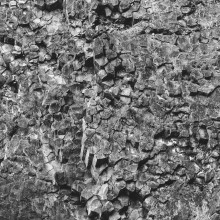
18:20 - Ancient oxygen source from crushed rocks
Ancient oxygen source from crushed rocks
Jon Telling & Jordan Stone, Newcastle University
Around 2.3 billion years ago, the Earth experienced a massive change in the composition of its atmosphere: oxygen became an abundant element. This was partly owing to the evolution of microbes called cyanobacteria with the capability to photosynthesise, capturing the sun's energy to make food and releasing oxygen in the process. But if we try to look before this great oxidation event, it is much less clear how much oxygen was around, where it came from, and what was using it. This week though, researchers from Newcastle University revealed how crushing rocks, water and heat could be a recipe for releasing oxygen on the early Earth, which in turn could have affected how life evolved and flourished. Julia Ravey spoke to Jon Telling and Jordan Stone (destined to be a geologist with that name!) about the findings, with Jon explaining how oxygen may have been generated before photosynthesis…
Jon - One source is actually from water in the atmosphere. So when water goes up can interact with UV radiation, and that can actually start to split some of the water and in the process form things like oxygen. So it's thought that even before Cyanobacteria evolved, there would've been trace amounts of oxygen in the atmosphere, but very, very low concentrations - negligible compared to today. And then there's also been some theories which have suggested you maybe get oxygen from geological sources, from rocks as well. So maybe certain rock types, if they're crushed, could produce little bits of oxygen.
Julia - And if we're looking at this theory that we could have potentially got oxygen from rocks in some way, Jordan, how did you go about trying to recreate this environment in the lab?
Jordan - We started with borosilicate vials - glass little vials - and we wanted to make sure that we had no oxygen conditions like before the great oxidation event. So we were looking mostly at subsurface areas below the oceans. Rock types would be like basalt and peridotite. We crush those to simulate earthquake activity, which crushed those rocks and produce those reactive surfaces that we were looking for. So we added those to vials, all under completely nitrogen conditions, and then we'd add oxygen-free water, which we'd bubbled with nitrogen and then filled the air, the head space of the vials, with nitrogen as well and sealed those before we applied different temperature regimes.
Julia - And what did you find when you did this?
Jordan - First we found at lower temperatures, we were producing hydrogen up to about 80 degrees Celsius. And then the rocks did this weird thing where they shifted to hydrogen peroxide production, which is really exciting because hydrogen peroxide can naturally break down to form oxygen and water or microbes could do that themselves using enzymes, turning hydrogen peroxide into oxygen as well.
Julia - If there was some oxygen in this way, produced by rocks, do you know if this may have impacted the microbial life that was living on earth at the time?
Jon - Well, we don't know for sure, but we can certainly presume that it might have had an impact. Some people have gone back and tried to reconstruct what life was like from genetics, from existing life, seeing what's common to all life and sort of back-tracing it to the origin of life, the first cell that existed. And what they've found from these genetic studies is that the organisms liked it hot. There's genetic evidence that the organisms that first evolved were heat-loving ones that they used hydrogen gas, just like some of the experiments that we've been running, but also intriguingly, they contain genes for dealing with oxygen and hydrogen peroxide; things you wouldn't have thought were around very much at all on the early Earth. And maybe some of the results that we've got from these experiments could help explain that, that we have found this potential mechanism of generating more substantial local concentrations of oxygen, hydrogen peroxide, and oxygen, which could help explain that maybe early life was potentially using these compounds and how it might have actually affected the chemistry around early life; maybe in fractures under the sea floor. Maybe even contributed to the chemistry of prebiotic chemistry before life evolved.
Julia - And so Jordan, was there a matchup there between the temperatures where these microbes like to live and the temperatures that you saw in your experiments where you got this change in the rocks, in the chemistry?
Jordan - Yes, that was quite exciting. We found that lined up quite well with what we think the conditions were like where the earliest life forms existed. So we think that early life forms might have been hyperthermophiles. So they liked to live in hot temperatures. We found that we were only producing hydrogen peroxide at these high temperatures, which lines up really well with these organisms that we think survived there.
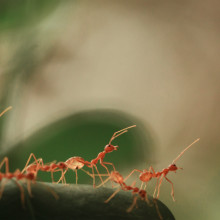
22:58 - Robot teaches tandem running to ants
Robot teaches tandem running to ants
Nigel Franks, University of Bristol
It’s not just us humans that sit in class and pick up wisdom from a teacher: ants do it too. As ant expert Nigel Franks explains to Will Tingle, they learn their way to better food and nest sites through a process called ‘tandem running’ where a teacher ant with the know-how shows a pupil the way. To explore how this works, they built an undercover robotic ant.…
Nigel - Our demonstration was the first rigorous evidence of teaching in non-human animals, but we used the definition of an individual as a teacher who, firstly, modifies its behaviour in the presence of a naive observer. Secondly, it's some initial cost to itself. Thirdly, in order to set an example so that, fourthly, the other individual can learn more quickly. So they had these four clauses and essentially, in tandem running in ants, the tandem leader qualifies under all four criteria. So we were able to demonstrate according to this rigorous definition that tandem running qualified as teaching among non-human animals.
Will - So to better understand this behaviour, for all intents and purposes, a robot ant was made. Why was this deemed necessary for the experiment?
Nigel - I think if you can build something that works, it does show that you've mostly understood what is crucial to the process. The robotic ant is not an ant that any one of us would recognise, but thankfully the ant does recognise it. So essentially it was a pinhead attached to quite a large gantry, a sort of overhead device to move things in two dimensions across a surface. And the pinhead was a dawned with the appropriate pheromones from a donor ant. And those are the pheromones that the tandem leader would normally deploy to get a naive individual to follow it. And the crucial thing was that the very artificial robot was able to teach the ant the route. So not only were we able to lead an ant from the old nest to a much better one, but we were able to observe that ant having surveyed the new nest and probably decided that it really is a valuable resource. We could track it on its return route and show that it had really learned a very efficient path home.
Will - What was significantly discovered about how ants teach one another?
Nigel - The thing with all these experiments is that the thing that most enlightens one is the unexpected, and when real ants lead a tandem run, they tapped their gaster, and the gaster is their bottom for want of a better expression, they tap their gaster periodically on the substrate and almost certainly leave a trail. Now, the intriguing thing is that neither the leader nor the followers slavishly followed that trail on the way home, but maybe it's a sort of safety line. But we didn't have the robotic leader doing this. What we noticed was that almost certainly the following ant in the absence of this trail, laid by the leader, started laying a trail itself. And I think the wonderful thing about that is that normally a tandem follower, if it really likes a new nest, will do a tandem run itself and will become a leader and will lay a trail. So if it was deploying this behaviour, to put it very anthropomorphically, blimey, this robot isn't doing a very good job and therefore I'll take over laying a trail myself. At this point, I would love to believe that it was evidence of yet another fail safe mechanism among the ants. When I was running the lab at Bristol, my chief role in life was to try and confuse ants and get them to exhibit odd behaviours. In a sense, every day of our experiment lives we were setting them puzzles to solve. And I can only remember one or two occasions when they were unable to solve those puzzles. And the reason they were so good at it is that they have backup mechanisms that enabled them to solve problems. They are marvellous creatures. They really are.










Comments
Add a comment